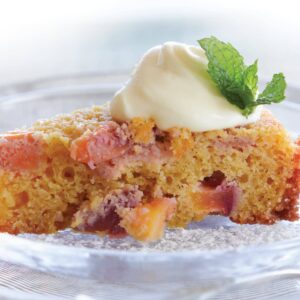
Soup can be a super-healthy and economical way to eat.
A proper, good soup is not bad for you. Cream soups are creamy in texture, not necessarily full of cream, and soup is such an excellent way to make a little bit of something go a long way.
It can include a big chunk of your recommended serves of vegetables for the day and is a good low-fat way to take the edge off the appetite before a meal. So if you want to spend less on diet formulas and second helpings and have less waste (and waist): make a real soup.
So what makes a soup?
Theoretically, a soup can be any combination of vegetables, meat or fish cooked in a liquid. It may be thick like gumbo, smooth like a bisque or chunky like chowder or bouillabaisse.
Though most soups are served hot, some like Vichyssoise and many fruit soups are served cold. Soups are often garnished with flavour enhancers such as croutons, grated or cubed cheese or sour cream. They can be served as a first course or as a meal.
Basic cream soup method
Cream soup is only one step along the food chain from baby food. Consequently kids love it, even when made from vegetables that usually send them screaming from the room. My own kids loathe pumpkin but love creamy pumpkin soup; it makes no sense at all.
Cream soups can be made from a single variety of vegetable such as carrot or broccoli, or from a selection of whatever you've got.
Try this delicious Creamy soup 101 recipe.
Most soups freeze well. Place a plastic bottle or beaker in the middle of the container and pour the prepared soup around it. When frozen, the beaker creates a void in the middle making it much quicker to defrost.
Step-by-step soup
-
Oniony ingredients such as onions, shallots, leeks or spring onions chopped and cooked till soft in oil or butter.
-
Add spices or herbs, bacon or sausage if using and cook for 1-2 minutes to release flavours.
-
Add around 4 cups of vegetables cut in chunks and 1 starchy vegetable such as potato, kumara or pumpkin – the starch improves the texture resulting in a smoother, more velvety soup.
-
Cover with liquid and simmer till vegetables are very tender.
-
Blend or process till smooth.
-
Adjust the consistency by adding liquid – milk, cream, stock, water.
-
Adjust seasoning.
The soup lover's pantry
Stock
Powder is the best value for money but these can be high in sodium so use sparingly if you're watching your salt intake. Liquid stocks are readily available and these can be used diluted. You can make your own stock and freeze for future use, or even use the water vegetables were cooked in.
Pasta
Small pasta shapes cook quickly and won't make the recipe gluggy.
Grains
Barley, rice, lentils, split peas, dried vegetables – are all really cheap, long lasting and great additions to soup. or you can buy 'old-fashioned soup mix', a blend of grains specifically for adding to soups.
Noodles
Dried noodles keep really well and will add texture and a bit of fun. Udon noodles and other soft noodle varieties can be purchased in long-life vacuum packs from Asian food stores and supermarkets.
Good bread
For the little people, 'soldiers' or M & CBs (Marmite and cheese fingers dried out in the oven like rusks) are great for dunking.
For the rest of us, try a cheesy scone with a spicy tomato-based soup; naan with Indian or Asian flavours; baguette with French soups; ciabatta or bruschetta with Italian, etc.
A loaf of bread cut into big fat cubes and drizzled lightly with oil, then toasted in a moderate oven (turn frequently), makes great croutons.
Savoury scones can be made in complementary flavours; try adding herbs, pesto, olives, sun-dried tomatoes or bacon to the mix. Spread the tops with chutney and grated cheese before baking.
Thermos
The soup lover should have a decent thermos. Soup is excellent autumn picnic food, great for taking to school or work for lunch on chilly days, and ideal for long car trips.
Tip: If soups, casseroles or stews made with stock taste too salty, add a couple of big chunks of potato to the mixture and simmer for 15 minutes, then remove and taste again. The potato will have absorbed some of the salt.
www.healthyfood.com










